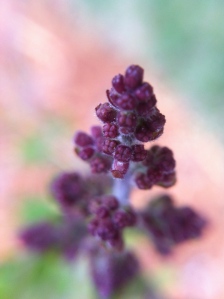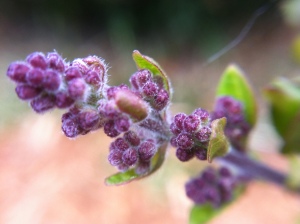 Take a deep breath. Really, take a moment to take a deep breath and slowly let it out. As you do, pay attention to what happens in your body. On the in-breath, what part of your body rose? On the out-breath, did the air escape from your nose or your mouth? What was the breath’s rhythm: did you breathe in and out for equal lengths of time or was one half of the breath longer than the other? Were you aware of your heart beating or any sensations in your body? How would you describe the sounds of your breath, on both the in and the out? If your eyes were open the first time, try the breath again with your eyes closed. Do you notice anything different with your eyes closed?
Take a deep breath. Really, take a moment to take a deep breath and slowly let it out. As you do, pay attention to what happens in your body. On the in-breath, what part of your body rose? On the out-breath, did the air escape from your nose or your mouth? What was the breath’s rhythm: did you breathe in and out for equal lengths of time or was one half of the breath longer than the other? Were you aware of your heart beating or any sensations in your body? How would you describe the sounds of your breath, on both the in and the out? If your eyes were open the first time, try the breath again with your eyes closed. Do you notice anything different with your eyes closed?
Simple, right? Just breathing and observing; two of the most fundamental aspects of being alive and being human. In our every day life, most of us are healthy enough that we can forget about our breathing. Thankfully, it is an automatic process. To a large extent, much of the observation that is critical to our survival is also automatic. We are continually monitoring our environment, making observations, and rapidly making judgments and altering our behavior without even being aware we are doing it.
Yet, both breathing and observing are also highly complex actions. How many processes go into keeping a body breathing? And how many philosophers have argued over the question of who is doing the observing and what is the relationship between the observer and the observed? Practitioners of yoga and meditation spend hours and years and lifetimes “following the breath.” Farmers, artists, designers, and scientists spend years “learning to see” and honing their ability to make and accurately record observations.
Observation must precede action if one wants her actions in the world to be meaningful. Therefore, observation is at the heart of permaculture, the art of using principles observed in the rest of nature to design the human world. In fact, “Observe and Interact” is the first permaculture principle. However, we are a society of fixers and doers, and observation does not look like fixing or doing. In actuality, observation is a skill that takes both effort and focus, but from the outside it could be confused with laziness, inaction, indecision, or procrastination. So we skip ahead and often try to solve problems without first really observing what the root causes are. Have you ever tried to adopt someone else’s solution to a problem – whether it’s a weight-loss strategy or a wealth-building strategy or a household organization system – only to find that their strategy does not adapt well to the ways in which you and your family live? In the end, you probably felt even more discouraged about the problem, as well as disappointed in yourself for wasting all the mental, physical, and even financial resources that went into implementing the strategy.
As time-crunched adults with shrinking attention spans and long to-do lists, we have to actually make a conscious choice to observe a specific thought process, behavior, or relationship in our life before we attempt to label it as “good” or “bad,” “healthy” or “toxic,” “adaptive” or “disruptive” – and especially before we attempt to make any efforts to improve, fix, or alter it. As simple as it sounds, making this commitment to observation might not be all that simple.
Want to try it? What is one area of your life that might benefit from a little observation? Why not choose one thing and give it a little extra attention this week? You can be as rigorous and scientific or as casual about the process as you’d like. You can write your observations down or just keep track of them mentally. Feel free to share some of them in the comments section!
Also, you might find it helpful to post your commitment to this observation somewhere in your home, office, or car, because, if you are anything like me, you have a short attention span and might forget you want to participate in this little experiment 🙂
I’d love to hear how the experiment goes for you and what challenges and discoveries come up!
I’ll be back later this week with a post about how I am using Observation to help me understand how depression manifests in my life and to test strategies for building a foundation that will help me be more resilient and depression-proof in the future.

